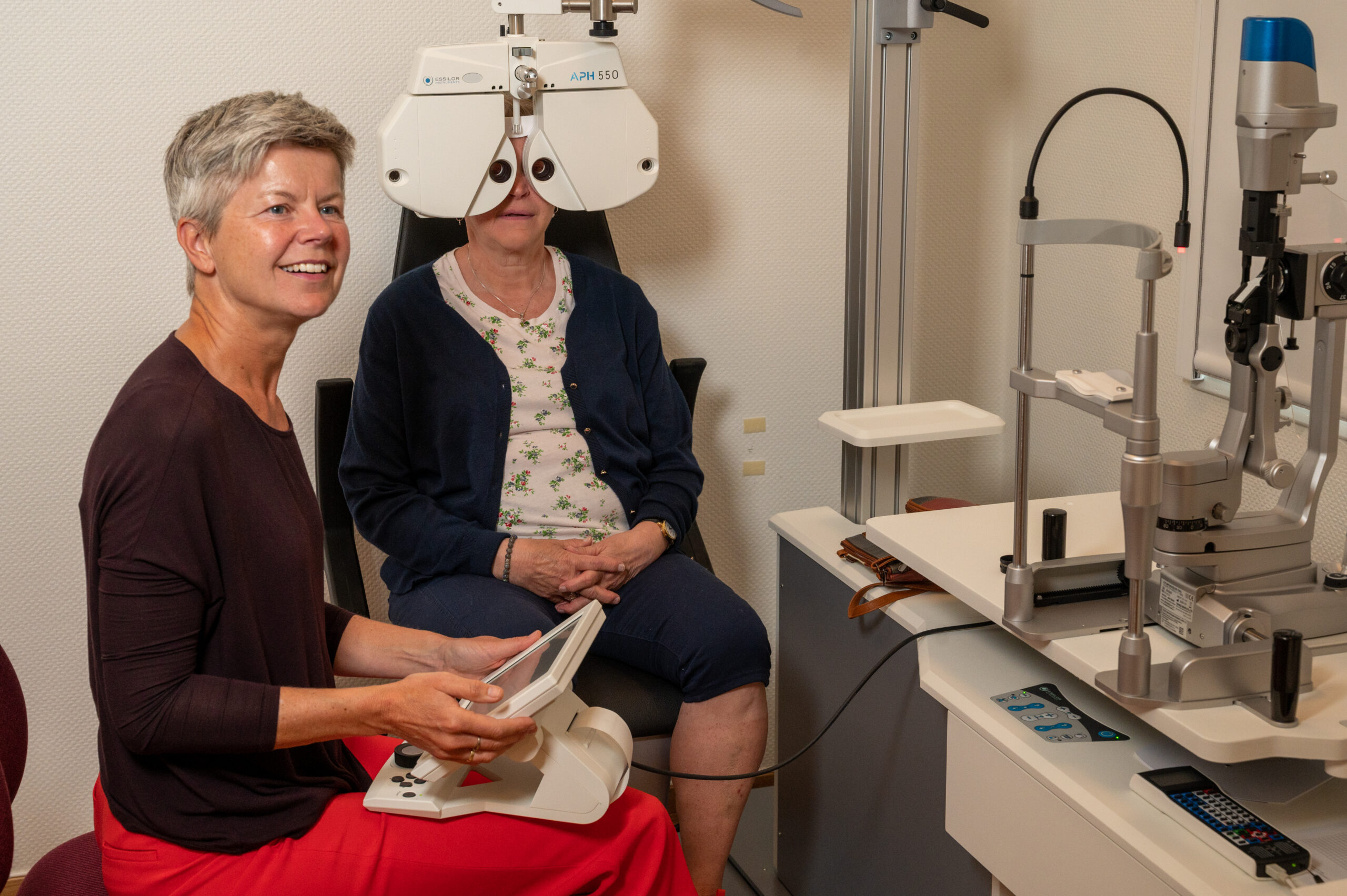- Deafblindness
- Syn
- Hearing
- Mobility
- Communication
- ICT
- Research projects
- Publications
- Conferences and webinars
- Video archive
What is vision and characteristics of visual impairment?

Vision is one of our five senses. A large part of the brain is used to process visual impressions. The sense of sight perceives impressions both at a very great distance, for example when we can see a mountain many miles before we stand at the foot of the mountain, and very close up, such as the shaking of our glasses. Our sense of sight gives us information about shape, colour, distance, size and movement. In simple terms, the sense of sight consists of: the eye, the optic nerve, the visual pathways and the visual centre in the brain.
Eikholt's offer
We can provide you with information and knowledge about visual function and visual impairments in combination with hearing impairments. By mapping your vision and visual function, we gain knowledge about how your vision works in different activities and contexts. You'll meet both an optician and a vision educator, and in our interdisciplinary team we can offer training and trialling of aids and strategies. This can take place as part of individual programmes.
The sense of sight
It is in the eye, or more specifically in the retina, that visual impressions are received before being sent via the optic nerve and visual pathways to the visual centre at the back of the brain to be interpreted. The retina consists of sensory cells; 125 million rods and 6 million cones. The cones are located in the centre of the retina, in the area called the macula (the yellow spot). It is this area that makes up our sharp vision, which perceives colours and small details. The cones need a lot of light to function. The rest of the retina is covered by the rods. This makes up our orientation vision. The rods perceive movement very quickly, but do not perceive colour and need very little light to function.
Information from the retina travels to the optic nerve, and via several switches in the visual pathways it reaches the visual centre. In the visual centre, the visual impressions are processed and compared with previous visual impressions. It is this interpretation that gives the visual impression meaning.
The most common eye conditions
- Age-related macular degeneration (calcification). Affects visual acuity especially in people over 70 years of age.
- Glaucoma (glaucoma). Glaucoma is an umbrella term for a number of types of eye diseases that cause damage to the optic nerve, usually due to excessive pressure. This can result in varying degrees of visual field loss.
- Cataract (cataract). Changes in the lens of the eye that cause it to become cloudy and let less light through to the retina. The change is usually age-related.
- Diabetic retinopathy (visual impairment as a result of diabetes). New, fragile blood vessels form on the retina. Leaks and scar tissue can occur on the retina, which in turn can lead to impaired vision.
- Retinitis Pigmentosa (RP). A hereditary disorder characterised by restrictions in the visual field, impaired night vision and sensitivity to light. Among deafblind people, RP often occurs as part of Usher syndrome. Usher syndrome means that a person has RP and is either deaf or hard of hearing.
- Injuries/accidents. The sense of sight consists of a large number of functions and these are controlled from different parts of the brain. This means that almost no matter where in the brain an injury occurs, either due to an accident or an internal injury (tumour, haemorrhage or blood clot), one or more functions of the sense of sight will be affected. This can manifest itself as various visual field defects, double vision, reduced visual acuity, inability to perceive movement and distance, etc.
Consequences of visual impairment
Of course, the consequences of visual impairment depend on the type of injury and how extensive it is. In general, however, the ability to orientate and see details is reduced or lost. Many people also become sensitive to light and dependent on good contrasts. This can lead to a need for assistive devices and training to be able to continue getting around and doing "detailed work" such as reading and writing. Many visually impaired people develop their senses of hearing and touch very well to compensate for their reduced vision.
If you have a hearing impairment and your eyesight is reduced, your visual impairment makes it difficult to lipread. Not everyone is aware of how much they rely on lipreading and believe that it is their hearing that has deteriorated when it becomes more difficult to follow a conversation. Often, it turns out that it's vision that has deteriorated. A visually impaired person with reduced hearing will also find it difficult to orientate themselves in their surroundings. It becomes difficult to hear cars, pedestrians, echoes from houses, etc.
Dual sensory loss leads to limitations in relation to communication, information and free movement. Where a visually impaired person would use their hearing and a hearing impaired person would use their sight to compensate for their sensory loss, people with dual sensory loss have severe limitations.
